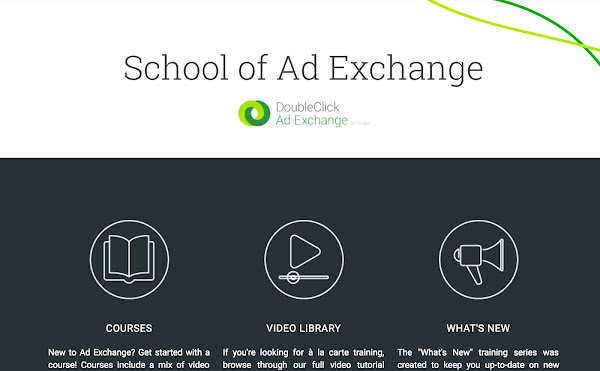Google believes in the value of the open web, an ecosystem where users get access to information, and publishers are able to create and earn money from their content. And at DoubleClick, our product roadmap is focused on a simple premise: to help publishers thrive and create sustainable businesses with advertising. That commitment isn’t just for today, tomorrow or next quarter - we invest in solutions for the long-term, that will help publishers succeed for many years to come.
On the eve of the 10th anniversary of the smartphone, when we talk about the open web we are really talking about mobile: more than half of all ad queries on DoubleClick’s publisher platform are on mobile1. At the same time, the fastest-growing form of content across all digital channels is video2. Today, we’re launching three new betas, all designed to help publishers thrive in a mobile and video world.
Putting users first and delivering better ads
People expect great experiences wherever they’re consuming content. That’s why we built a flexible, component-based native advertising solution to help publishers deliver better ads that fit a user’s context. We’re excited to announce that we are bringing video to Native Ads on DoubleClick in a new beta offering.
Since May 2016, native ad impressions served through DoubleClick have more than doubled3 with publishers including The New York Times, Aller Media, Vogue, Zillow Group, Slate, Epicurious and eBay adopting our solution. With the addition of video to our native ads solution, publishers can now capture premium video advertising budgets on their non-video content.
According to Chris Quinn, Head of Commercial Operations at Kijiji, a subsidiary of eBay and an early tester of this solution:
“The [DoubleClick] native video templates — content and app-install — enable Kijiji to give our advertisers an alternative to banner and static native. We were excited about the ability to run assets seamlessly without embedded video players, which will hopefully give us a jumpstart in the video space. Testing has just begun across our iOS app, and we look forward to seeing positive results and potentially incorporating into our greater offering in 2017.”
Maximizing revenue while delivering the best user experience
Our research shows that people will not wait for slow content on mobile: over half of visits are abandoned when mobile web pages take longer than 3 seconds to load4. In this environment, publishers only have a split second to deliver the most relevant and highest paying ads to maximize their overall revenue without increasing latency and losing users.
At DoubleClick, we’ve consistently delivered server-side solutions that create the most revenue possible across all of a publisher’s inventory without sacrificing speed. For example, Dynamic Allocation has helped publishers earn up to a 24% lift in their programmatic revenue5 and publishers like Gannett have seen 15% greater lift in eCPMs for revenue from programmatic channels with new products like DoubleClick for Publishers First Look.
When speed matters, the fastest solutions yield the best results. That’s why we’re excited about our latest offering, Exchange Bidding. Exchange Bidding helps publishers maximize demand for every impression by letting them put multiple exchanges into competition in real time without adding any new client-side code. Since we announced it earlier this year, the number of participating publishers has grown 4x, the number of exchange partners has doubled, and we’ve moved the product from alpha into closed beta in the US.
Continuing this momentum, we’re happy to announce that we are expanding the beta of Exchange Bidding to include mobile apps, with Smaato as one of our first mobile app exchange partners.
“By integrating directly with DoubleClick for Publishers, Smaato can compete in real time for ad impressions based on price and priority, in parallel with other exchanges. We’re delighted to be an early participant in Exchange Bidding and look forward to expanding this solution to all of our partners.”
-Christian Sieweke, Senior Product Manager at Smaato.
Engaging users with personalized video experiences on every screen
Mobile and connected streaming devices are the new destination for digital video. Last year, ad impressions served to Connected TVs via DoubleClick Bid Manager grew over 225%6. Across all these screens, people expect personalized experiences no matter what they’re watching.
Earlier this year, we launched Dynamic Ad Insertion (DAI) for live TV on DoubleClick as a way to bring addressable advertising capabilities to broadcasters. Whether for live sporting events in France or the Presidential debates in the United States, partners like TF1 and Fox News have used DAI to deliver seamless, personalized ad experiences to all screens. In fact, for some of our biggest partners, DAI represents about a third of all their digital ad impressions, and the majority of their Connected TV impressions are being served via DAI.
Today, we’re excited to announce a beta offering to extend Dynamic Ad Insertion to video on demand (VOD). Publishers like A+E Networks are now inserting relevant, highly targeted ads into both long- and short-form VOD content across all devices, and delivering personalized ads while eliminating common pain points like buffering. This feature will be capable of serving both direct-sold and programmatic campaigns - in both cases delivering smarter, data-driven ads that perform better.
At Google, we know we’re only successful when our partners are successful. Today, building for sustainability means thoughtfully innovating to deliver mobile and video solutions that help publishers earn the most from their content while respecting user desires for better experiences.
Posted by Jonathan BellackDirector of Product Management, Publisher Platforms
1 DoubleClick internal data, Oct - Nov 2016
2 eMarketer, “Growth of Average Time Spent per Day with Major Media by US Adults, 2013-2018 (% change)”, October 1, 2016
3 DoubleClick internal data, May - Oct 2016
4 DoubleClick, “The Need for Mobile Speed”, September 2016
5 Boston Consulting Group, “The Publisher’s Path to Profitability”, July 2015
6 DoubleClickThe State of Play”, July 2016























